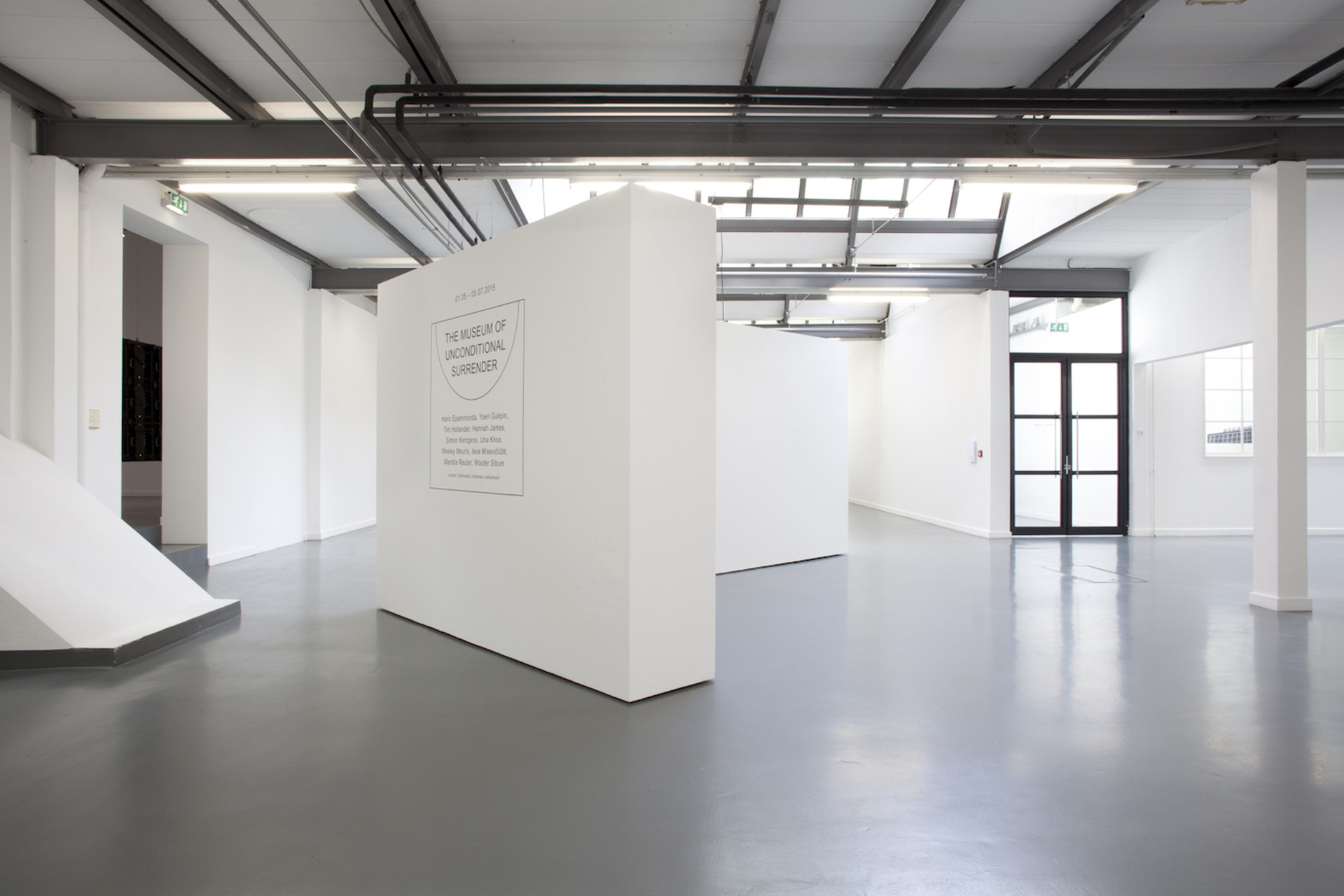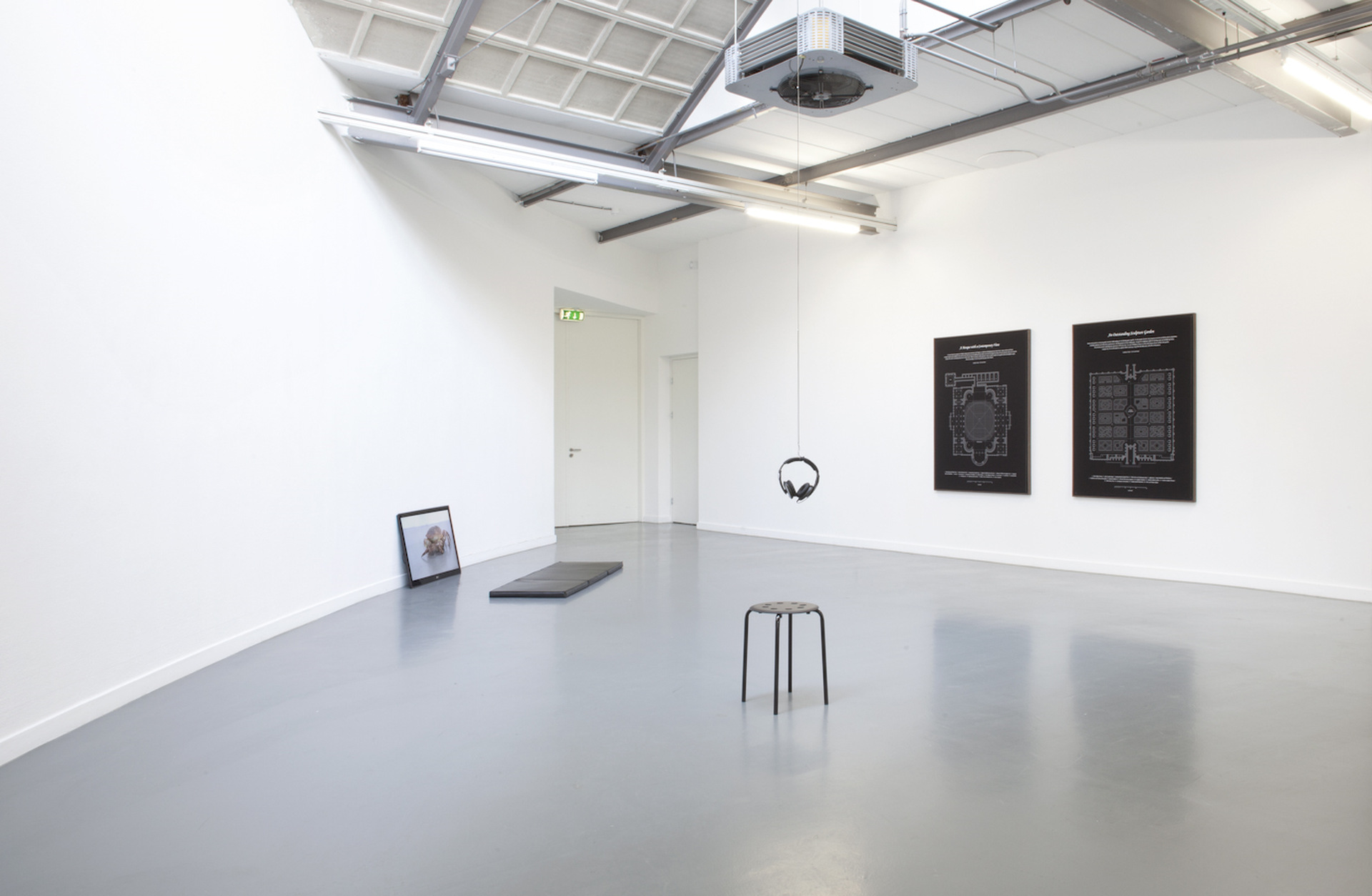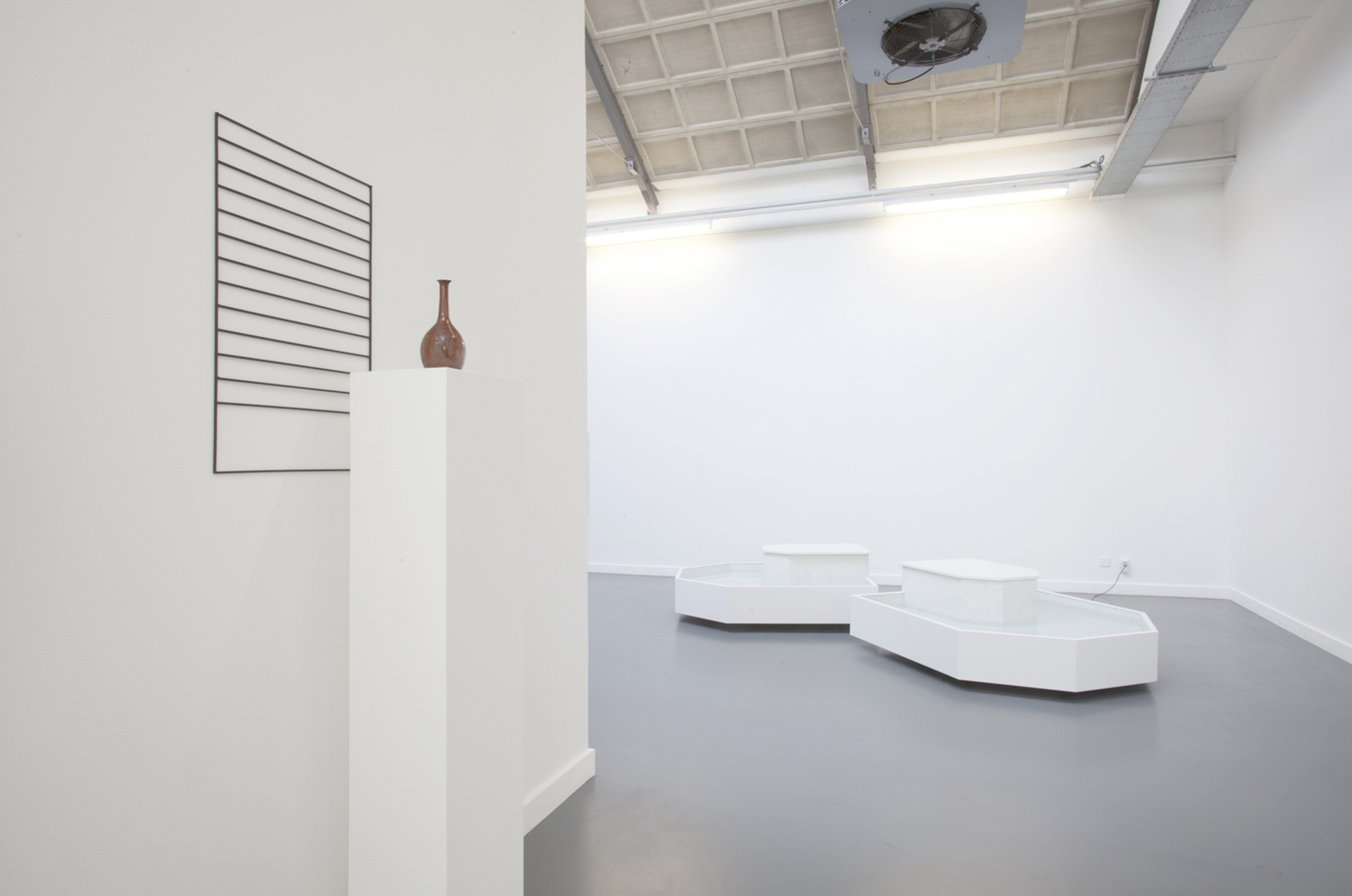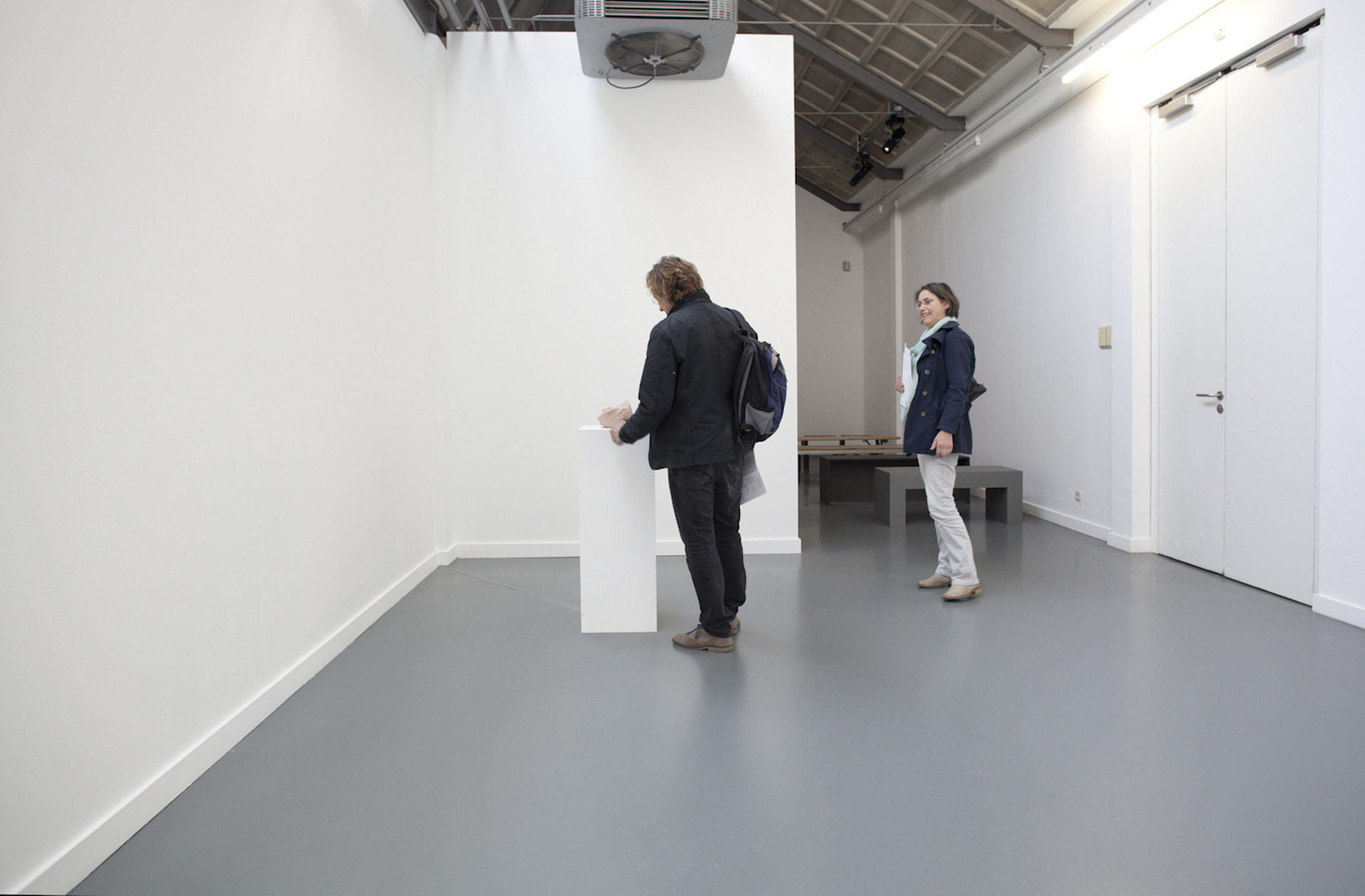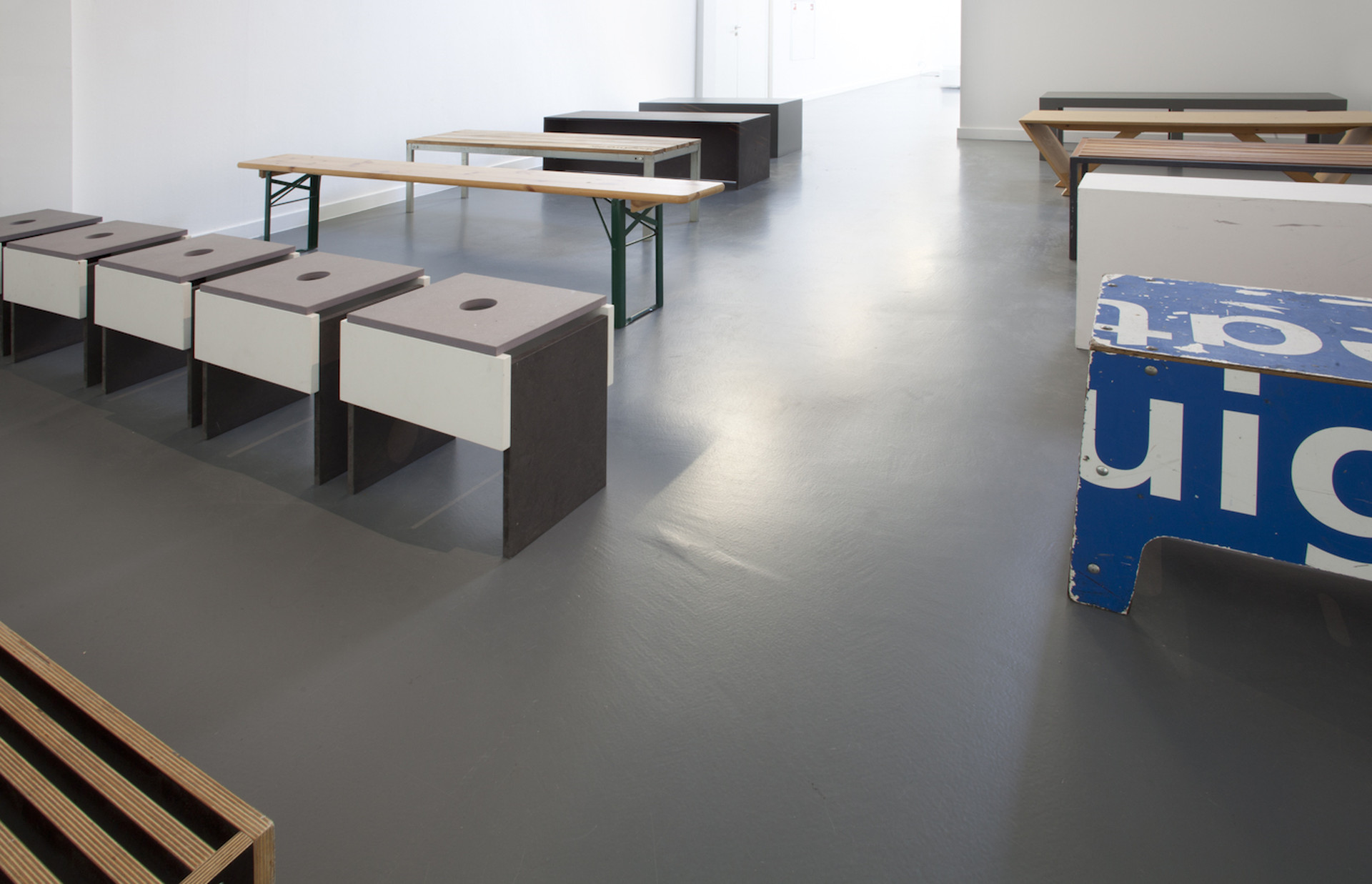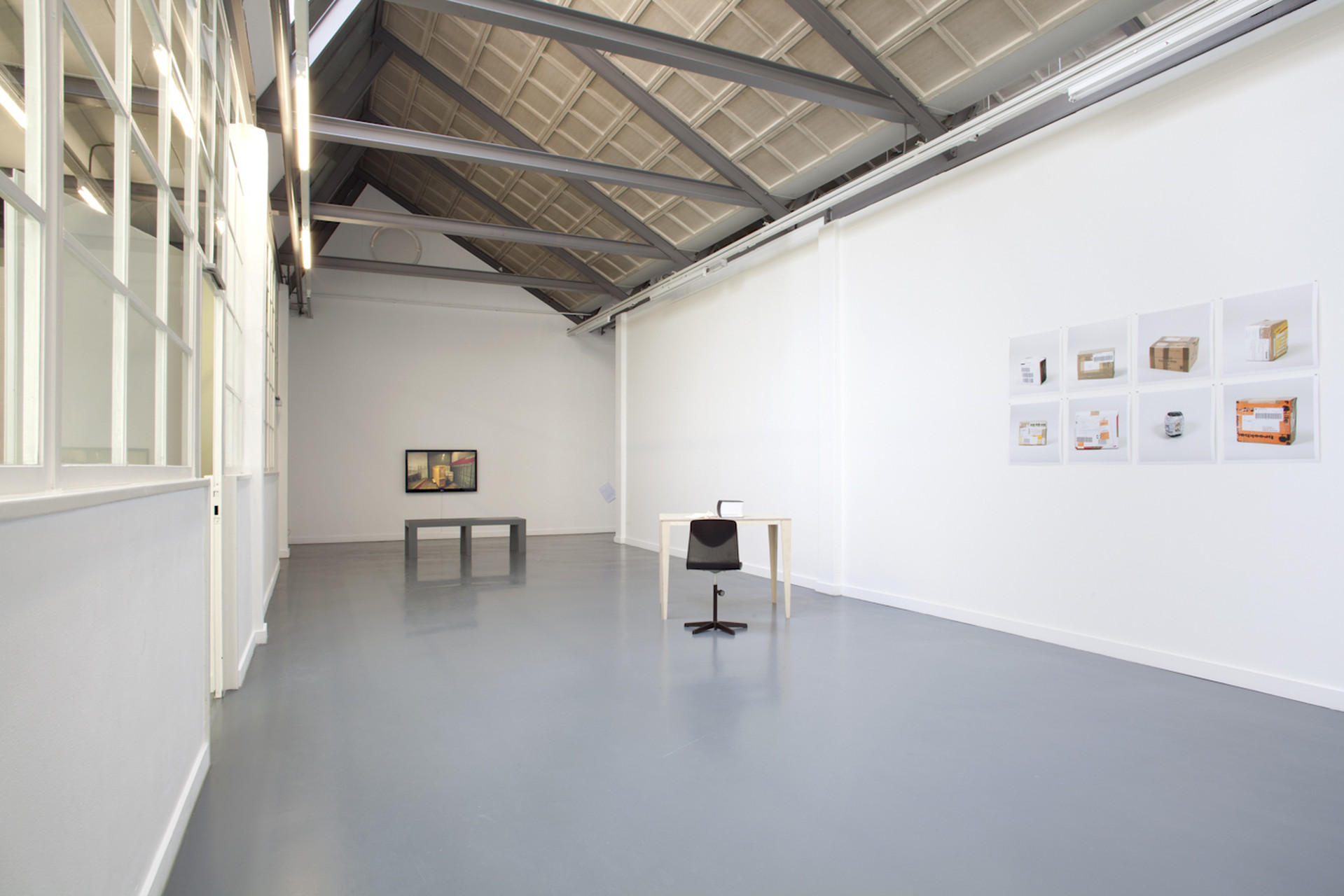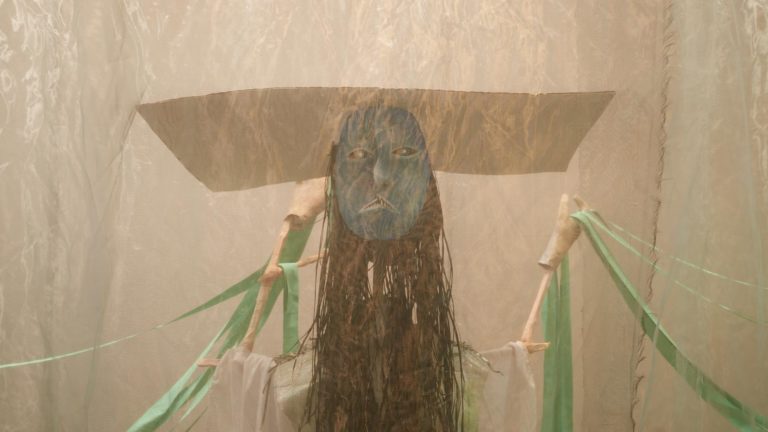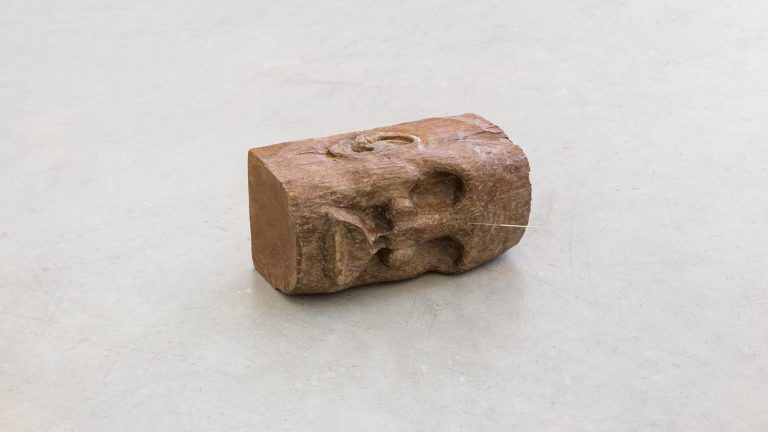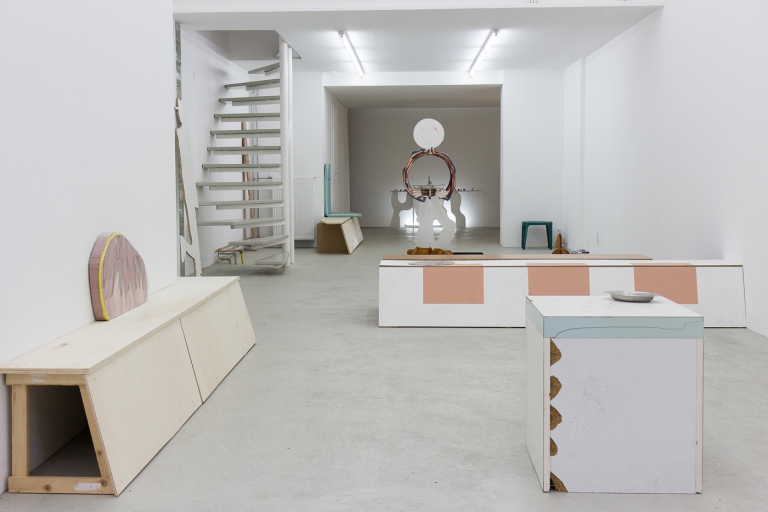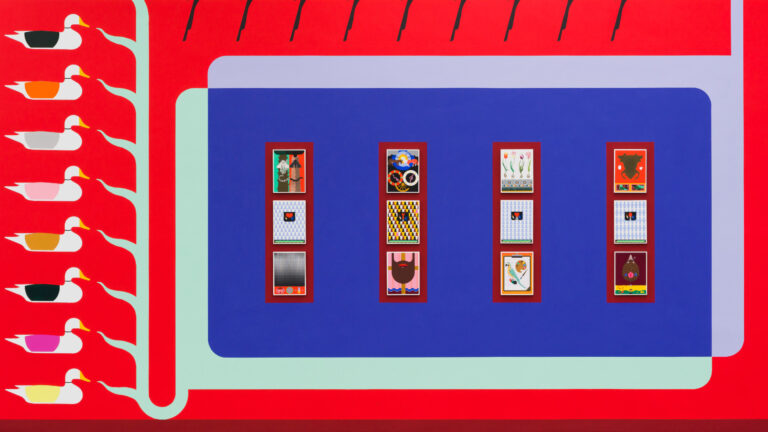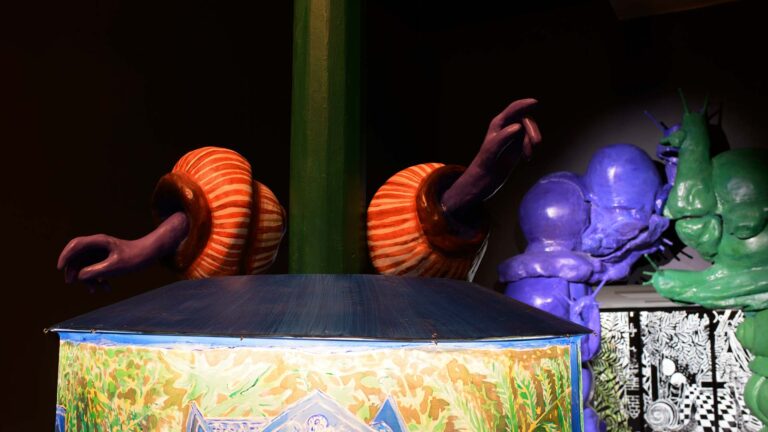Artists: Haris Epaminonda, Yoeri Guépin, Tim Hollander, Hannah James, Simon Kentgens, Una Knox, Wesley Meuris, Kira Nova, Mandla Reuter, Wouter Sibum
Exhibition title: The Museum of Unconditional Surrender
Curated by: Niekolaas Johannes Lekkerkerk
Venue: TENT, Rotterdam, The Netherlands
Date: May 2 – July 5, 2015
Photography: Janssen Adriaans, images courtesy of the artists and TENT, Rotterdam
Dear Visitor,
Firstly, a warm welcome to The Museum of Unconditional Surrender. In fact, it goes without saying that your presence is much appreciated, and is deemed even more necessary for this kind of exhibition endeavour. As you will see.
You may have already guessed that The Museum of Unconditional Surrender departs from the above curious account, although – and please bare with us – we will momentarily hold certain points of view in suspense. The exhibition you are about to witness proposes a slight reversal: a twist of plot. Indeed, the plot thickens, as we speak.
The exhibition will shift its focus from the artworks and how they perform, to those objects and structures that commonly enable and advance their presentation. In The Museum of Unconditional Surrender, the mise en scène, support structures, and displays take centre stage; temporarily abandoning their secondary rolls in favour of a leading one. What or who is playing the active role now? We can no longer speak of a B-squad, or a stand-in … Everything is centre stage. The division of roles between objects and subjects is made ambiguous and placed in the center of attention.
In this perceptual arms race, The Museum of Unconditional Surrender makes room for renegotiating the position of the ‘exhibition object’, a boundless set of entities common and akin to the exhibition space. A natural habitat of sorts. Projectors, plants, interns, exit signs, plinths, pedestals, wires, strings, temporal walls, invigilators, monitors, and vitrines with attached dust particles: the exhibition space is an ecology full of playful objects and entities. Let’s unsettle the plot and have an encounter with the object that is mostly withheld from sight and withdrawn from thought, but that has an abundance of qualities and characteristics, a material agenda, its own state of being, and enhanced functions to enable us to perceive it and other, external phenomena.
Thus, The Museum of Unconditional Surrender essentially becomes an embodied experiment – that’s where you come in, dear visitor – aiming to make ambiguous and strange the exhibition’s spatial, physical and written language, the institution to which it has become attached, and more importantly, the objects and entities that it temporarily holds. The visitor essentially becoming an object in its own right; no leading subject who tells what is in front, no heroism of the One. What is it to be an object?
Why ambiguous and strange? Well, as a means to come to terms with the game at play: the idea of a persistent disconnection between object and subject, human and thing, visitor and artwork. To slice through the implied hierarchies, taxonomies, and attitudes in approaching different and external objects, and to stop classifying and seeking to determine what something ‘is about’. Instead, let’s aim to provide an equal footing for those objects and entities we encounter and perceive in an exhibition, so that they are partners in our daily living and working practices. Obscuring the divisions between I and It, What and Who. The Museum of Unconditional Surrender is a temporal and convivial assembly of differing and cohabiting objects and entities, striving towards a more sensitive and responsive exhibition dynamic.
Yours truly,
Niekolaas Johannes Lekkerkerk
On behalf of The Museum of Unconditional Surrender
Simon Kentgens, Revolution, 2015
Mandla Reuter, Coppice, 2007–ongoing
Tim Hollander, 50 Things One Might Encounter During an Exhibition, 2014
Tim Hollander, 50 Things One Might Encounter During an Exhibition (detail), 2014
Hannah James, The Wrestler and the Crab, 2015
Hannah James, The Wrestler and the Crab (detail), 2015
Wesley Meuris, A Mosque with a Contemporary View (left) and An Outstanding Sculpture Garden (right), both 2012
Haris Epaminonda, Untitled #01 t/f, 2014
Wesley Meuris, Basins, 2014
Ieva Misevičiūtė, The Is No Stopping This Institution, 2014
Wouter Sibum, Archipelago of Subjective Perspectives, 2015
Una Knox, When What Becomes Who, 2009
Yoeri Guépin, Notes and Queries (left) and External Storage (right), both 2014
Yoeri Guépin, Notes and Queries, 2014


